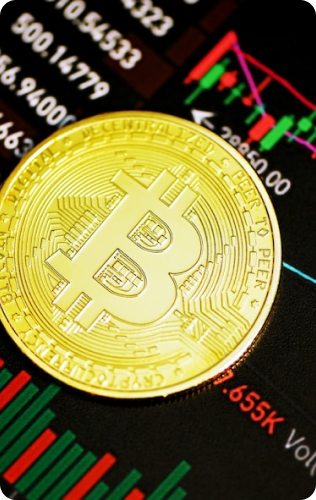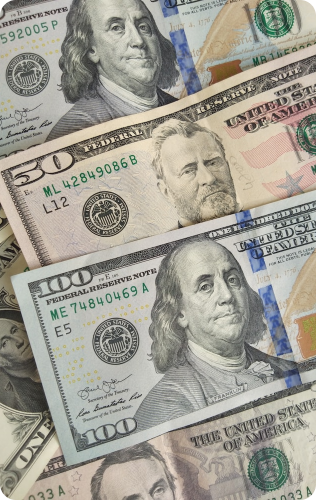Bridge the Global Market
with BCR
 Multi-Regulated
Multi-Regulated
 Competitive Commission
Competitive Commission
 300+ Global CFDs
300+ Global CFDs
Access 300+ global CFDs
with $3.00 commission per side
Majors, Minors and Exotics, Forex, Spot Metals and Energy, Indices and ASX-listed Stocks, Hong Kong Stocks and US Stocks
MetaTrader 5 is now
at BCR
A powerful platform with everything you need to bridge the Global Markets
300+
Products
400:1
Max Leverage
300 USD
Minimum Deposit
0.0+
Spreads
24/5
Client Service
100%
Segregated Client Fund
Trade on Spreads from 0.0+ pips. No requotes. Trade with our diverse and deep liquidity
An extensive range of markets
Trade Majors, Minors and Exotics, Forex, Spot Metals and Energy, Indices and ASX-listed Stocks, Hong Kong Stocks and US Stocks in one BCR Account.
Commodity CFDs
Trade Gold, Silver, Brent and WTI Oils with BCR. A customized mini contract is available for Silver.
Share CFDs
Trade Hong Kong, Australian and the U.S. shares with leverage. Through our diversified liquidity partners, BCR is able to bring market depth directly from HKEX, ASX and CBOE.
Index CFDs
BCR offers multiple CFD products covering major stock market indices from the UK and Europe, APAC and the U.S.
Forex
Trade 40+ Majors, Minors and Exotics with BCR, and benefit from our competitive spreads, $3.00 commission per side and up to 400:1 leverage.
Metals CFDs
Take a glance at our competitive spreads for Gold and Silver trade with BCR.
Commodity CFDs
Trade Gold, Silver, Brent and WTI Oils with BCR. A customized mini contract is available for Silver.
Share CFDs
Trade Hong Kong, Australian and the U.S. shares with leverage. Through our diversified liquidity partners, BCR is able to bring market depth directly from HKEX, ASX and CBOE.
Index CFDs
BCR offers multiple CFD products covering major stock market indices from the UK and Europe, APAC and the U.S.
Forex
Trade 40+ Majors, Minors and Exotics with BCR, and benefit from our competitive spreads, $3.00 commission per side and up to 400:1 leverage.
Metals CFDs
Take a glance at our competitive spreads for Gold and Silver trade with BCR.
Trade at Will with Just One Tap
Customized MetaTrader 4 and MetaTrader 5 from BCR have all the powerful tools that you need to trade on both Windows and mobile devices.
Why trade CFDs with BCR
LICENSED AND EXPERIENCED
BCR is proud of our 16+ years of commitment to the CFD industry as a multi-regulated investment firm since 2008.
SEGREGATED CLIENT FUNDS
All client funds deposited with BCR are completely separated from the company's operational funds.
UTILISE EVERY TRADING STRATEGY
BCR is your best choice of intra-day traders, scalpers, copytrade, and robots.
24/5 SUPPORT TEAM
Our dedicated client support team is available 24/5, and our premium account managers have even more availability.
Marketing News & Analysis
Ahead of the Trend - Never Miss Opportunities

UK GDP rises 0.1% MoM in February, as expected
UK GDP expanded 0.1% MoM in February vs. 0.1% estimate. GBP/USD remains below 1.2650 after the UK data. The UK economy expanded 0.1% in February, having rebounded 0.3%...
UK GDP rises 0.1% MoM in February, as expected
UK GDP expanded 0.1% MoM in February vs. 0.1% estimate. GBP/USD remains below 1.2650 after the UK data. The UK economy expanded 0.1% in February, having rebounded 0.3%...

EUR/USD clings to mild losses below 1.0770, investors await Eurozone inflation, US PMI data.
EUR/USD trades softer around 1.0765 despite the softer US Dollar. Futures traders expect the US Fed to start easing in the June meeting. The German HICP figure rose 2.3%...
EUR/USD clings to mild losses below 1.0770, investors await Eurozone inflation, US PMI data.
EUR/USD trades softer around 1.0765 despite the softer US Dollar. Futures traders expect the US Fed to start easing in the June meeting. The German HICP figure rose 2.3%...

Weekly Outlook 2024.04.15-2024.04.19
Disclaimer: The information contained herein (1) is proprietary to BCR and/or its content providers; (2) may not be copied or distributed; (3) is not warranted to be accurate, complete...
Weekly Outlook 2024.04.15-2024.04.19
Disclaimer: The information contained herein (1) is proprietary to BCR and/or its content providers; (2) may not be copied or distributed; (3) is not warranted to be accurate, complete...


Multi-Award Winning CFD Broker





Event Notice
CLARIFICATION NOTICE - Fraudulent Company Website and Emails
2023-11-06 05:02:42
It has come to the attention of BCR Co Pty Ltd (BCR/ our Company) that some unidentified parties have made use of our Company name to:
set up a fraudulent company website, the domain corporate name of which is very similar to the company name of BCR; and/or form a fraudulent originating email address and emailed to the general public.
BCR hereby clarifies that we have never set up any website at:
- https://trader.chnthebcr.store
- https://chnthebcr.store
- https://if-hhh.com
- https://cfds1.chnthebcr.store/
- https://cfds1.chnthebcr.center/
- https://www.bcrmt5.com
Our Company has no connection whatsoever with the contents of the above-mentioned fraudulent websites and/or fraudulent emails. Please do not visit the aforesaid fraudulent websites, respond to the email, or visit any websites mentioned therein from the fraudulent email addresses, or provide any personal information to the email senders or such websites.
BCR is concerned about the issue and has reported the case to the proper authorities. Our Company reserves all legal rights against all parties involved in the incident. If any of our customers receives an email from the fraudulent email address, please contact BCR's customer service department immediately.
Ready to get started?
Subscribe to our Newsletter
Subscribe to our Newsletter
Trading Specification
Account Overview Spreads, Commission & Swap Margin & Leverage Trading Hours Deposit & WithdrawalRisk Disclosure: Derivatives are traded over-the-counter on margin, which means they carry a high level of risk and there is a possibility you could lose all of your investment. These products are not suitable for all investors. Please ensure you fully understand the risks and carefully consider your financial situation and trading experience before trading. Seek independent financial advice if necessary before opening an account with BCR.
Risk Disclosure: Derivatives are traded over-the-counter on margin, which means they carry a high level of risk and there is a possibility you could lose all of your investment. These products are not suitable for all investors. Please ensure you fully understand the risks and carefully consider your financial situation and trading experience before trading. Seek independent financial advice if necessary before opening an account with BCR.

 English
English
 简体中文
简体中文
 繁體中文
繁體中文
 Bahasa
Melayu
Bahasa
Melayu
 Tiếng
Việt
Tiếng
Việt
 ไทย
ไทย
 日本語
日本語
















